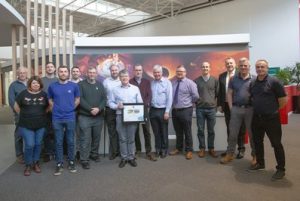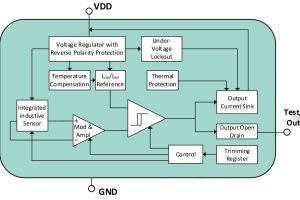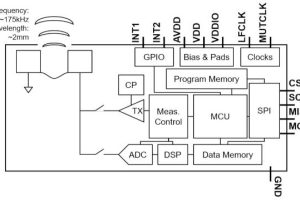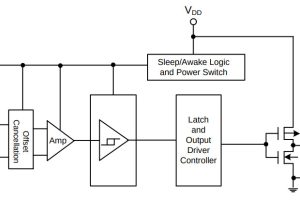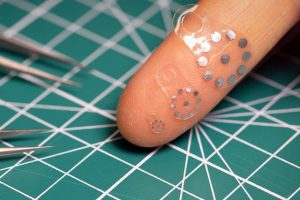It launched at the end of last week, aboard a SpaceX Falcon 9 rocket from the Cape Canaveral Space Force Station in Florida (right). The craft has since successfully made contact with ground stations back on Earth, providing early readings of its overall status and capabilities post launch.
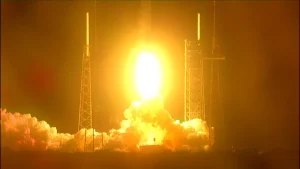 The Leonardo PACE team at Southampton is pictured above and the company is bringing the “colour” to the study. The detectors that were delivered by the company form part of the mission’s OCI (Ocean Color Instrument) and this will reveal a new spectrum of ocean colours to provide extra information.
The Leonardo PACE team at Southampton is pictured above and the company is bringing the “colour” to the study. The detectors that were delivered by the company form part of the mission’s OCI (Ocean Color Instrument) and this will reveal a new spectrum of ocean colours to provide extra information.
It explains:
“The Ocean Colour Instrument is a highly advanced optical spectrometer that will be used to measure properties of light over portions of the electromagnetic spectrum. It will enable the continuous measurement of light at finer wavelength resolutions and over a larger spectral range than previous NASA satellite sensors, extending key system ocean colour data records for climate studies.”
For example, phytoplankton are microscopic organisms that contribute to the conversion of carbon dioxide from the atmosphere to the ocean.
The Leonardo sensor can not only indicate the density of the phytoplankton population, it should help NASA identify the specific communities of phytoplankton, which all have a different colour signature. This is important because some forms of phytoplankton can be highly toxic for marine life, and for humans who consume shellfish and fish.
“It’s been incredibly rewarding to work in collaboration with the PACE team at NASA,” said Leonardo’s Space Programme Manager, Matthew Hicks. “We feel a sense of urgency in delivering this capability for their important work, since recent satellite observations have suggested a small decrease in global phytoplankton productivity.”
“Low-nutrient ‘marine deserts’ appear to be expanding due to rising ocean surface temperatures. It is a real source of pride that the sensors fitted to the NASA satellite could generate years of data to their scientists who could identify pathways to help us protect our oceans in the future.”
PACE mission
Basically, the data from the PACE mission should help to better understand how the ocean and atmosphere exchange carbon dioxide. It will also reveal how aerosols might fuel such phytoplankton growth in the surface ocean.
For example, it will help identify the extent and duration of harmful algal blooms. And the satellite will expand NASA’s long-term observations of Earth. It will, says Nasa, “take Earth’s pulse in new ways for decades to come”.
The mission is due to last at least three years, though the spacecraft is loaded with enough propellant for a nine year lifespan.
“All citizens of the Earth should realise everything is connected: land, ocean, and atmosphere,” said Jeremy Werdell, Project Scientist for the PACE mission and also a Biological Oceanographer in the Ocean Ecology Laboratory at NASA’s Goddard Space Flight Centre.
“PACE is NASA’s next great investment in the combined studies of all these aspects of the Earth’s system. With its capabilities, there’s so much scientific growth that will be accomplished, which makes PACE incredibly important to how we understand what we’re doing to our home planet.”
Initially, Leonardo were contacted as part of a pre-development Phase and then as a source of Flight Spares. Following testing of the Leonardo devices by NASA, the special Leonardo sensors were promoted to flight hardware due to their performance, said the company.
NIMBUS
Leonardo highlights that it has a heritage of delivering infrared detector technology for space missions. For example, it has been working with NASA missions since 1972 for NIMBUS 5.
More recently, it has has supplied detectors for the NASA Osiris-Rex asteroid return programme from the Bennu asteroid, and the NASA LUCY mission to explore the Jupiter Trojan asteroids.
Image: Leonardo UK
See also: SWOT satellite launches to measure Earth’s water levels
 Electronics Weekly Electronics Design & Components Tech News
Electronics Weekly Electronics Design & Components Tech News
